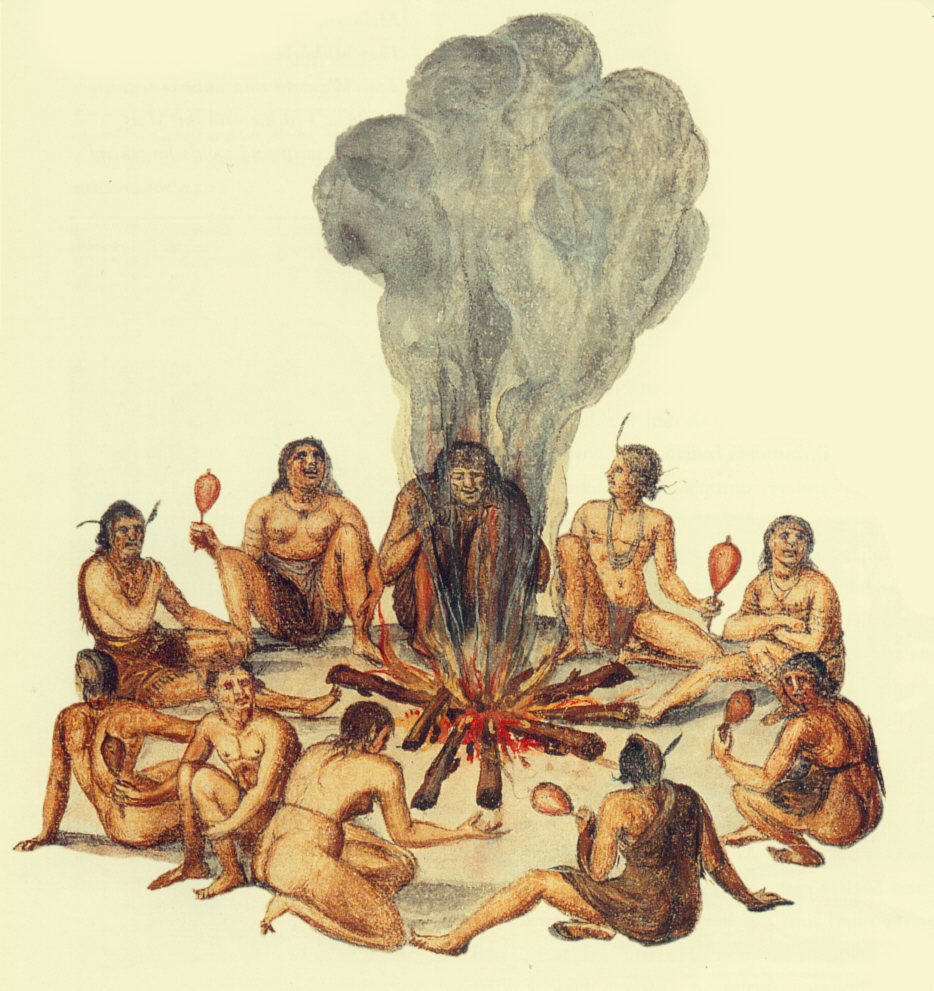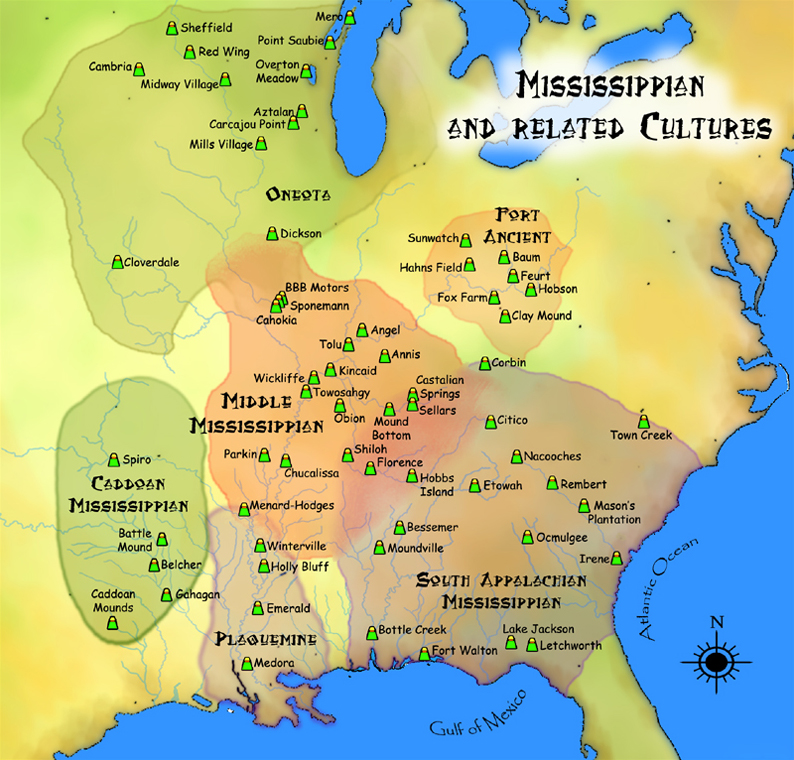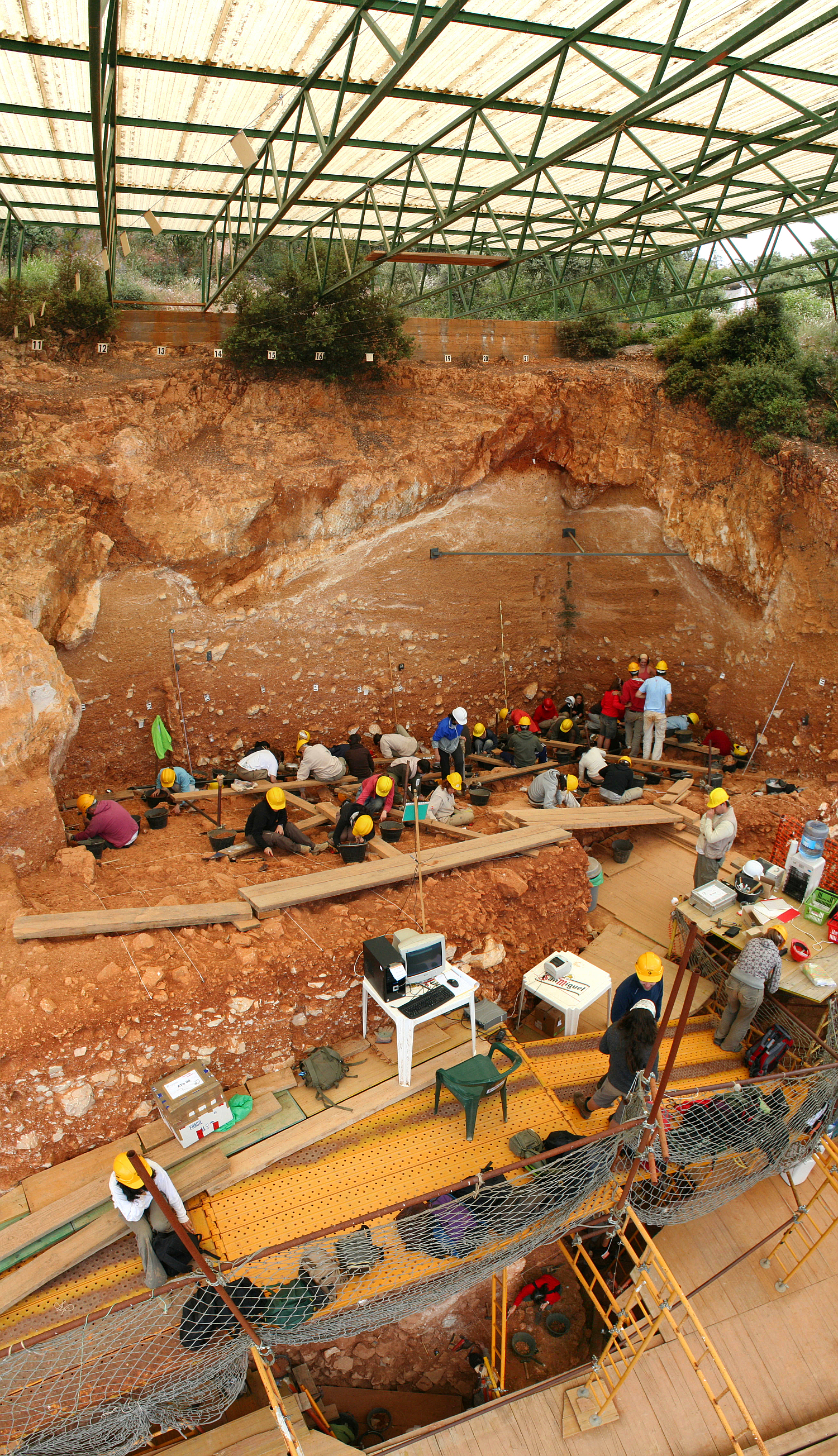|
Joara
Joara was a large Native American settlement, a regional chiefdom of the Mississippian culture, located in what is now Burke County, North Carolina, about 300 miles from the Atlantic coast in the foothills of the Blue Ridge Mountains. Joara is notable as a significant archaeological and historic site, where Mississippian culture-era and European artifacts have been found, in addition to an earthwork platform mound and remains of a 16th-century Spanish fort. The first European encounters came in the mid-16th century. In 1540 the party of Spanish conquistador Hernando De Soto recorded visiting this place. A later expedition in 1567 under Juan Pardo, another Spanish explorer, founded the first European settlement in the interior of the continent, establishing Fort San Juan at this site, followed by other forts to the west. [...More Info...] [...Related Items...] OR: [Wikipedia] [Google] [Baidu] [Amazon] |
Fort San Juan (Joara)
Fort San Juan was a late 16th-century fort built by the Spanish under the command of conquistador Juan Pardo in the native village of Joara, in what is now Burke County, North Carolina. Used as an outpost for Pardo's expedition into the interior of what was known to the Spaniards as ''" la Florida"'', Fort San Juan was the foremost of six forts built and garrisoned by Pardo in modern-day North Carolina, South Carolina, and Tennessee to extend Spain's effective control deeper into the North American continent. Fort San Juan was the first European settlement in North Carolina and the interior of present-day United States, predating the earliest English settlement at Roanoke Island, North Carolina by 18 years. In 1568, natives from Joara and the region surrounding the fort razed this and the five other Spanish forts, killing all but one of the soldiers. After the fort's destruction, its exact location was lost. Archaeological work has been underway for years, revealing artifacts ... [...More Info...] [...Related Items...] OR: [Wikipedia] [Google] [Baidu] [Amazon] |
Chiaha
Chiaha was a Native American chiefdom located in the lower French Broad River valley in modern East Tennessee, in the southeastern United States. They lived in raised structures within boundaries of several stable villages. These overlooked the fields of maize, beans, squash, and tobacco, among other plants which they cultivated. Chiaha was at the northern extreme of the paramount Coosa chiefdom's sphere of influence in the 16th century when the Spanish expeditions of Hernando de Soto and Juan Pardo passed through the area. The Chiaha chiefdom included parts of modern Jefferson and Sevier counties, and may have extended westward into Knox, Blount and Monroe counties. The Spanish explorers' accounts of Chiaha provide a rare first-hand glimpse of life in a Dallas phase Mississippian-era village. The Dallas culture, named after Dallas Island near Chattanooga, where its distinct characteristics were first observed, dominated much of East Tennessee between approximately 1300 ... [...More Info...] [...Related Items...] OR: [Wikipedia] [Google] [Baidu] [Amazon] |
Juan Pardo (explorer)
Juan Pardo was a Spanish explorer who was active in the latter half of the 16th century. He led a Spanish expedition from the Atlantic coast through what is now North and South Carolina and into eastern Tennessee on the orders of Pedro Menéndez de Avilés, in an attempt to find an inland route to a silver-producing town in Mexico. In 1566 Menéndez had built Fort San Felipe and established Santa Elena on present-day Parris Island; these were the first Spanish settlements in what is now South Carolina. While leading his expedition deeper into the interior, Pardo founded Fort San Juan at Joara, the first European settlement in the interior of North Carolina, and five additional forts in what are the modern U.S. states of North Carolina, Tennessee, and South Carolina. These five forts were Fort San Pedro near Chiaha, Fort San Pablo on the French Broad River, Fort Santiago near modern Morganton, North Carolina, Fort Santo Tomás near Cofitachequi, and Fuerta de Nostra Señora ... [...More Info...] [...Related Items...] OR: [Wikipedia] [Google] [Baidu] [Amazon] |
North Carolina
North Carolina ( ) is a U.S. state, state in the Southeastern United States, Southeastern region of the United States. It is bordered by Virginia to the north, the Atlantic Ocean to the east, South Carolina to the south, Georgia (U.S. state), Georgia to the southwest, and Tennessee to the west. The state is the List of U.S. states and territories by area, 28th-largest and List of U.S. states and territories by population, 9th-most populous of the List of states and territories of the United States, United States. Along with South Carolina, it makes up the Carolinas region of the East Coast of the United States, East Coast. At the 2020 United States census, 2020 census, the state had a population of 10,439,388. Raleigh, North Carolina, Raleigh is the state's List of capitals in the United States, capital and Charlotte, North Carolina, Charlotte is its List of municipalities in North Carolina, most populous and one of the fastest growing cities in the United States. The Charl ... [...More Info...] [...Related Items...] OR: [Wikipedia] [Google] [Baidu] [Amazon] |
Burke County, North Carolina
Burke County is a county in the U.S. state of North Carolina. It is part of the state's western mountain region, containing sections of the Blue Ridge Mountains including the Linville Gorge and South Mountains. As of the 2020 census, its population was 87,570. Its county seat is Morganton. Burke County is part of the Hickory- Lenoir- Morganton, NC Metropolitan Statistical Area. History Early history Indigenous peoples inhabited the interior and the coastal areas for thousands of years. Native Americans of the complex and far-flung Mississippian culture inhabited the county long before Europeans arrived in the New World. They were part of a trade network extending from the Gulf Coast to the Great Lakes. They built earthwork mounds, including at Joara, a site and regional chiefdom in North Carolina, near present-day Morganton. It was the center of the largest Native American settlement in North Carolina, dating from about 1000 AD and expanding into the next centuries. In 1 ... [...More Info...] [...Related Items...] OR: [Wikipedia] [Google] [Baidu] [Amazon] |
Mississippian Culture
The Mississippian culture was a collection of Native American societies that flourished in what is now the Midwestern, Eastern, and Southeastern United States from approximately 800 to 1600 CE, varying regionally. It was known for building large, earthen platform mounds, and often other shaped mounds as well. It was composed of a series of urban settlements and satellite villages linked together by loose trading networks. The largest city was Cahokia, believed to be a major religious center, located in what is present-day southern Illinois. The Mississippian way of life began to develop in the Mississippi River Valley (for which it is named). Cultures in the tributary Tennessee River Valley may have also begun to develop Mississippian characteristics at this point. Almost all dated Mississippian sites predate 1539–1540 (when Hernando de Soto explored the area), with notable exceptions being Natchez communities. These maintained Mississippian cultural practices into the 1 ... [...More Info...] [...Related Items...] OR: [Wikipedia] [Google] [Baidu] [Amazon] |
Cherokee
The Cherokee (; , or ) people are one of the Indigenous peoples of the Southeastern Woodlands of the United States. Prior to the 18th century, they were concentrated in their homelands, in towns along river valleys of what is now southwestern North Carolina, southeastern Tennessee, southwestern Virginia, edges of western South Carolina, northern Georgia (U.S. state), Georgia and northeastern Alabama with hunting grounds in Kentucky, together consisting of around 40,000 square miles. The Cherokee language is part of the Iroquoian languages, Iroquoian language group. In the 19th century, James Mooney, an early American Ethnography, ethnographer, recorded one oral tradition that told of the Tribe (Native American), tribe having migrated south in ancient times from the Great Lakes region, where other Iroquoian Peoples, Iroquoian peoples have been based. However, anthropologist Thomas R. Whyte, writing in 2007, dated the split among the peoples as occurring earlier. He believes that ... [...More Info...] [...Related Items...] OR: [Wikipedia] [Google] [Baidu] [Amazon] |
Great Lakes
The Great Lakes, also called the Great Lakes of North America, are a series of large interconnected freshwater lakes spanning the Canada–United States border. The five lakes are Lake Superior, Superior, Lake Michigan, Michigan, Lake Huron, Huron, Lake Erie, Erie, and Lake Ontario, Ontario (though hydrologically, Lake Michigan–Huron, Michigan and Huron are a single body of water, joined at the Straits of Mackinac). The Great Lakes Waterway enables modern travel and shipping by water among the lakes. The lakes connect to the Atlantic Ocean via the Saint Lawrence River, and to the Mississippi River basin through the Illinois Waterway. The Great Lakes are the largest group of freshwater lakes on Earth by total area and the second-largest by total volume. They contain 21% of the world's surface fresh water by volume. The total surface is , and the total volume (measured at the low water datum) is , slightly less than the volume of Lake Baikal (, 22–23% of the world's surface f ... [...More Info...] [...Related Items...] OR: [Wikipedia] [Google] [Baidu] [Amazon] |
Excavation (archaeology)
In archaeology, excavation is the exposure, processing and recording of archaeological remains. An excavation site or "dig" is the area being studied. These locations range from one to several areas at a time during a project and can be conducted over a few weeks to several years. Excavation involves the recovery of several types of data from a site. This data includes artifacts (portable objects made or modified by humans), features (non-portable modifications to the site itself such as post molds, burials, and hearths), ecofacts (evidence of human activity through organic remains such as animal bones, pollen, or charcoal), and archaeological context (relationships among the other types of data).Kelly&Thomas (2011). ''Archaeology: down to earth'' (4th ed.). Belmont, Calif.: Wadsworth, Cengage Learning. Before excavating, the presence or absence of archaeological remains can often be suggested by, non-intrusive remote sensing, such as ground-penetrating radar. Basic inf ... [...More Info...] [...Related Items...] OR: [Wikipedia] [Google] [Baidu] [Amazon] |
Iroquoian Language
The Iroquoian languages () are a language family of indigenous peoples of North America. They are known for their general lack of labial consonants. The Iroquoian languages are polysynthetic and head-marking. As of 2020, almost all surviving Iroquoian languages are severely or critically endangered, with some languages having only a few elderly speakers remaining. The two languages with the most speakers, Mohawk (Kenien'kéha) in New York and Canada, and Cherokee in Oklahoma and North Carolina, are spoken by less than 10% of the populations of their nations. Family division *Iroquoian **Northern Iroquoian ***(Lake Iroquoian) ****Iroquois Proper (Five Nations) ***** Seneca (severely endangered) ***** Cayuga (severely endangered) ***** Onondaga (severely endangered) *****Susquehannock or Conestoga *****Mohawk–Oneida ****** Oneida (severely endangered) ****** Mohawk ****Huronian ***** Huron-Wyandot ***** Petun (Tobacco) ***Tuscarora–Nottoway **** Tuscarora **** Meherri ... [...More Info...] [...Related Items...] OR: [Wikipedia] [Google] [Baidu] [Amazon] |
Spanish Colonization Of The Americas
The Spanish colonization of the Americas began in 1493 on the Caribbean island of Hispaniola (now Haiti and the Dominican Republic) after the initial 1492 voyage of Genoa, Genoese mariner Christopher Columbus under license from Queen Isabella I of Castile. These overseas territories of the Spanish Empire were under the jurisdiction of Crown of Castile until the last territory was lost in Spanish–American War, 1898. Spaniards saw the dense populations of indigenous peoples of the Americas, Indigenous peoples as an important economic resource and the territory claimed as potentially producing great wealth for individual Spaniards and the crown. Religion played an important role in the Spanish conquest and incorporation of indigenous peoples, bringing them into the Catholic Church peacefully or by force. The crown created civil and religious structures to administer the vast territory. Spanish men and women settled in greatest numbers where there were dense indigenous populations ... [...More Info...] [...Related Items...] OR: [Wikipedia] [Google] [Baidu] [Amazon] |





